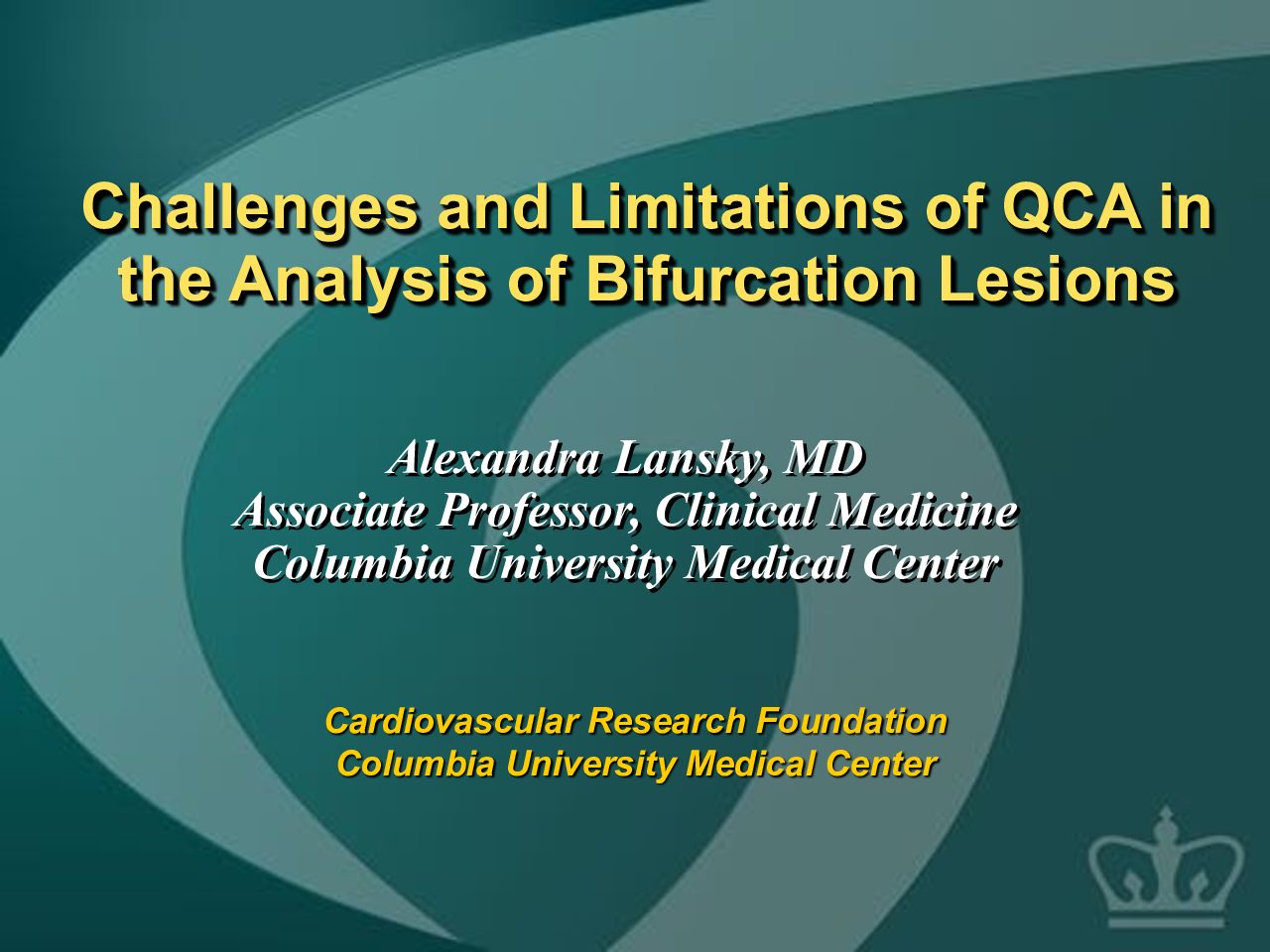EBC - ON DEMAND
Challenges and Limitations of QCA in the Analysis of Bifurcation Lesions
European Bifurcation Club 2006 – EBC 2006 – Rome, Italy
Breaking the Consensus
Challenges and Limitations of QCA in the Analysis of Bifurcation Lesions
Author: Alexandra Lansky, MD, Associate Professor, Clinical Medicine, Columbia University Medical Center
SUGGESTIONS
- Lesions in the carina should be reported only once
- Methodology and algorithm for contour and reference (by flagging carina) appear sound for the proximal and distal segments, however:
- Carina should be included in the proximal parent vessel segment or on its own
- Interpolation across carina is artificial (should not be done)
- Carina reference should be the true (un-diseased) diameter (this would result in a constant reference and %DS no matter which segment it is linked to)
- Challenge is to figure out contour of carina at baseline when there is disease in this segment
- Reporting should allow one single MLD and DS for the entire bifurcation lesion
- Allow multiple segment of interest analysis (DES bifurcation software) to avoid having to do multiple segment analyses
-

